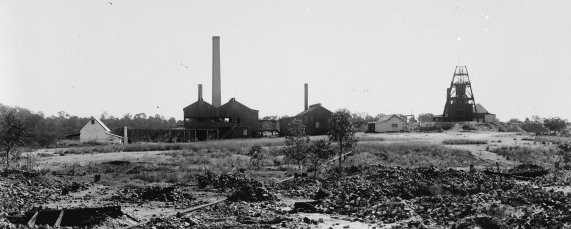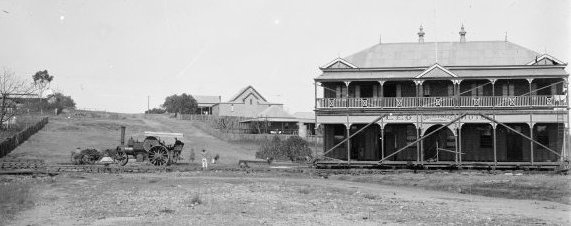





Clermont has a rich mining history and as the first inland settlement in the tropics is one of the most historic towns in Central Queensland. The first European to pass through the Clermont region was Ludwig Leichhardt, a Prussian explorer and scientist who came to Australia to study its rocks and wildlife. This was in 1845 on the first of three major expeditions exploring northern and central Australia.
Jeremiah Rolfe was one the first European settlers in the area and established a station west of Clermont in 1854 on Mistake Creek. Rolfe christened the creek on realising that his station was not on the Belyando River as he had presumed.
It wasn’t until the discovery of gold in 1861, sparking one of Queensland’s major gold rushes, that the population started to grow. A rudimentary hotel was built in 1862 for the influx of miners and Clermont was proclaimed a town the following year.

Copper mine at Copperfield, Queensland, ca. 1910. Photographer, GC Pullar
Clermont's mining industry continued to grow in 1863 when Peak Downs Copper Company began mining Queensland's first rich copper lode just 5km south of Clermont. The municipality of Copperfield grew around the mine. 17,000 tonnes of refined copper were produced at the smelters over 15 years.
Both towns boomed in the 1860’s but by the 1880’s, due to falling copper prices in London, Copperfield’s population was halved. Today Copperfield is marked only by a single remaining brick smelter chimney.
Clermont faired better but being built next to a lagoon on low lying ground the town was subject to substantial flooding. Following the most damaging and tragic flood in 1916, the decision was made to relocate the town. Many of the wooden buildings, including the hotel, were moved by steam traction engines to higher ground.

Moving the Leo Hotel, Queensland, ca. 1917. Photographer, GC Pullar
Since the early discoveries of copper and gold, silver and coal resources have also been successfully mined and mining still accounts for nearly 40% of employment. The region produced 400,000 ounces of gold from 1878 to 1956. The 1980’s saw the discovery of a number of new gold deposits and new mines were developed at Pajingo, Wirralie, Yandan, Lucky Break and Belyando. The district also hosts the coal mines at Blair Athol and New Clermont, all testimony to the rich mineral potential of the region.